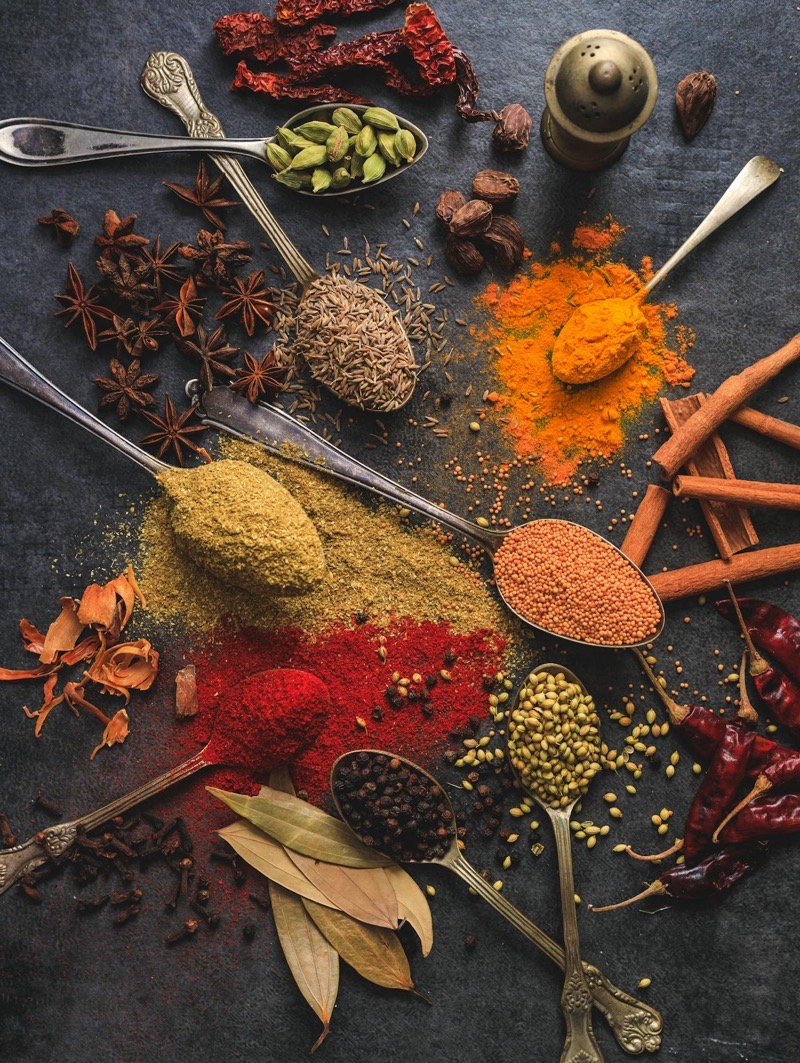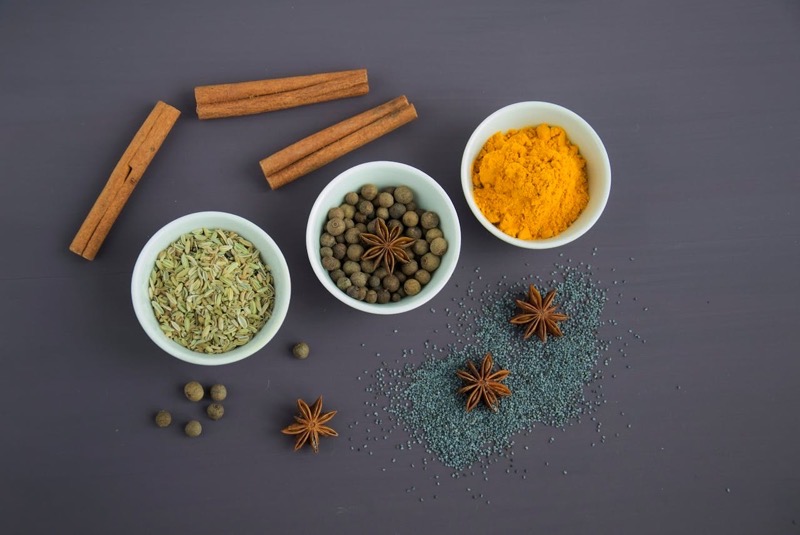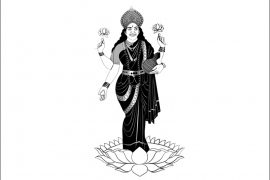In a Washington Post editorial, Gene Weingarten, disparaged Indian cuisine, calling it the ‘only ethnic food in the world based entirely on one spice. Poor chap chose to record his ignorance publicly in such an ignominious manner.
Anyone who knows anything about Indian food is bound to throw a fit about his stupid comment, as Indian food uses a variety of unique spices to create characteristic flavours for each dish.
Unsurprisingly, his article enraged Indians across the globe. Padma Lakshmi, presenter and executive producer of ‘Top Chef’ and ‘Taste the Nation,’ tweeted screenshots of the story and, justifiably, questioned his article. Very eloquently, she wrote:
What in the white nonsense is this?
India’s history is replete with accounts of Europeans –from Spain, Portugal, Netherlands, Armenia, England and so on – sailing across the oceans to buy India’s spices.
Christopher Columbus went on his great ‘search for India’ and ‘discovered’ the Americas by mistake. The Portuguese explorer and the first Count of Vidigueira sailed across the oceans and ‘discovered’ the sea route to India. Since then, the Portuguese, the Dutch, and the English (among others) risked their lives to get hold of India’s spices.
Indeed, it’s not just the Europeans; anyone who tastes Indian spices will get hooked on them. As Krish Ashok’s tongue-in-cheek tweet says:
If you ever wondered why on earth all those foreigners were so obsessed with pepper from India, you have probably only tasted the dried black variety. If you try the fresh green one from the vine, especially in pickle form, you will enthusiastically invade any country that had it.
Indian spices have been a part of international trade for a long time, even before the colonisers arrived. But did you know that a few staple spices came to India from other lands? Of course, they have found their place in the traditional Indian kitchen and are now as ‘native’ as possible.

Case in point: Coriander, Fennel, and Fenugreek. These spices, now indelibly entrenched in Indian cuisine, are, in historical terms, gifts from Greece, Rome and the Mediterranean cultures.
Coriander, or dhania, as we know it, is used in large volumes everywhere in India. Other spices are used in small amounts, but coriander seeds are used in tablespoons. Cumin, whose earthiness in the dhania-jeera combination is so nicely balanced by coriander’s more bright character, has a higher prominence.
Coriander leaves and seeds are linked; ergo, they have two names: dhania for the seeds and kothmir/kothamelli for the leaves. The difference can be traced back to the Sanskrit dhanyaka and kusthumbira. When you taste both and concentrate, you’ll notice a similar citrus flavour that ties the two together.
The name ‘cilantro,’ which Americans have given to the leaves, clarifies this difference, but the seeds are still known as coriander. The term is an unpleasant moniker derived from the Greek word for bedbugs, which is what some people claim they smell like.
It originated in the Mediterranean region and was widely utilised for ages, not only because it was fragrant and versatile but also because it was easy to grow and plentiful. The Greeks and Romans employed coriander extensively in their cuisine; tablets from a Mycenaean palace – constructed about 1300 BCE during the Trojan War – have revealed entries for ko-ri-a-da-na inscribed in primitive Greek.
Centuries ago, India’s spices, particularly pepper, cloves and cinnamon, symbolised glamour and luxury and were meant only for royalty. They were used for many other purposes other than cooking. For instance, the Egyptian Pharaoh Tutankhamun’s mummy was preserved with coriander and resins, according to Jack Turner’s book Spices: the History of a Temptation.
India offered pepper, cinnamon and cardamom to the world in exchange for coriander, cumin, fenugreek, and fennel. As Turner writes:
So thoroughly implanted is the sense of otherness of spices that native Mediterranean aromatics such as cumin, coriander, saffron and fennel have come to be associated more with the cuisine of the countries that adopted them than with the lands of their origin.
Therefore, despite its long history in the Mediterranean, Coriander thrives more in India than in the West.
The spice trade between India and the Mediterranean region was believed to have begun after Alexander invaded India in 327 BC. Even though his time was short, it left a lasting impact. Fenugreek seeds, like their cousin coriander, arrived in India from Greece.
According to historical sources, the Macedonian army introduced the spice to Punjab and northern India. The name means ‘Greek hay’ in Latin, although there is nothing by that name in contemporary Greece. However, if you ask for tsemeni (fenugreek in Turkish), you’ll receive Indian methi-dana.
Tsemeni is a spice used in Greece to flavour pastrami and craft dips and spicy sauces that go well with falafel and other Middle Eastern foods. The strong, bitter-flavoured seeds are now heavily used in Indian cuisine. Just like the former, methi leaves have been popularly used in culinary production. They are also used for their medicinal properties.
Then there’s fennel, a popular summer spice with a refreshing flavour and similar characteristics. It has Mediterranean/Middle-Eastern ties, much like coriander and fenugreek, and has a flavour and usage comparable to anise.
Because of their medicinal qualities, the plant’s leaves are popular ingredients in Indian kitchens and are widely used as a digestive aid and treatment for various respiratory ailments.
Fennel is also a key ingredient in Kashmiri and Bengali cuisines, where it is so deeply ingrained in the traditional repertoires that it’s hard to imagine the spice came from the Mediterranean. It’s used to flavour broths, spice up veggies with its unique and potent presence, and to flavour milky beverages across India. Above all, they’re used to create table condiments.
These three spices each have a unique flavour that may be readily recognised. It’s a shame that Gene Weingarten was so ignorant that he could not tell them apart. These three spices, although native to the Mediterranean, hold their place in the spice palettes of India.
India produces a wide range of spices, many of which are unique to the subcontinent. Spices are chopped, ground, roasted, sautéed, fried, and used in various ways. Food is blended to extract nutrients and bind them in a consumable form.
Indian cuisine is an art that a single spice or a single dish cannot define. It has been handed down through the centuries via different cultures that found abode in the country. It is a part of our history. Perhaps that’s why Padma Lakshmi is justified in describing Weingarten’s piece as ‘unintentional anti-humor, regurgitating an unimaginative, racist joke with no punchline.’
-30-
Copyright©Madras Courier, All Rights Reserved. You may share using our article tools. Please don't cut articles from madrascourier.com and redistribute by email, post to the web, mobile phone or social media.Please send in your feed back and comments to editor@madrascourier.com











